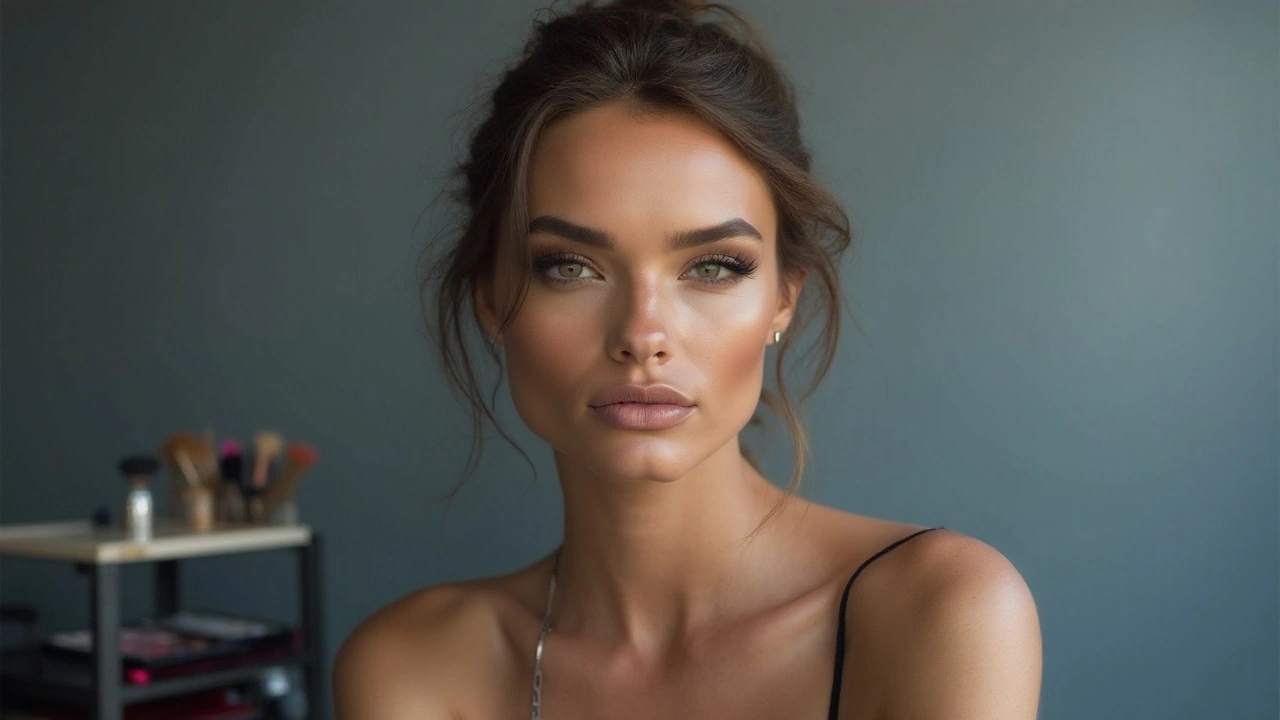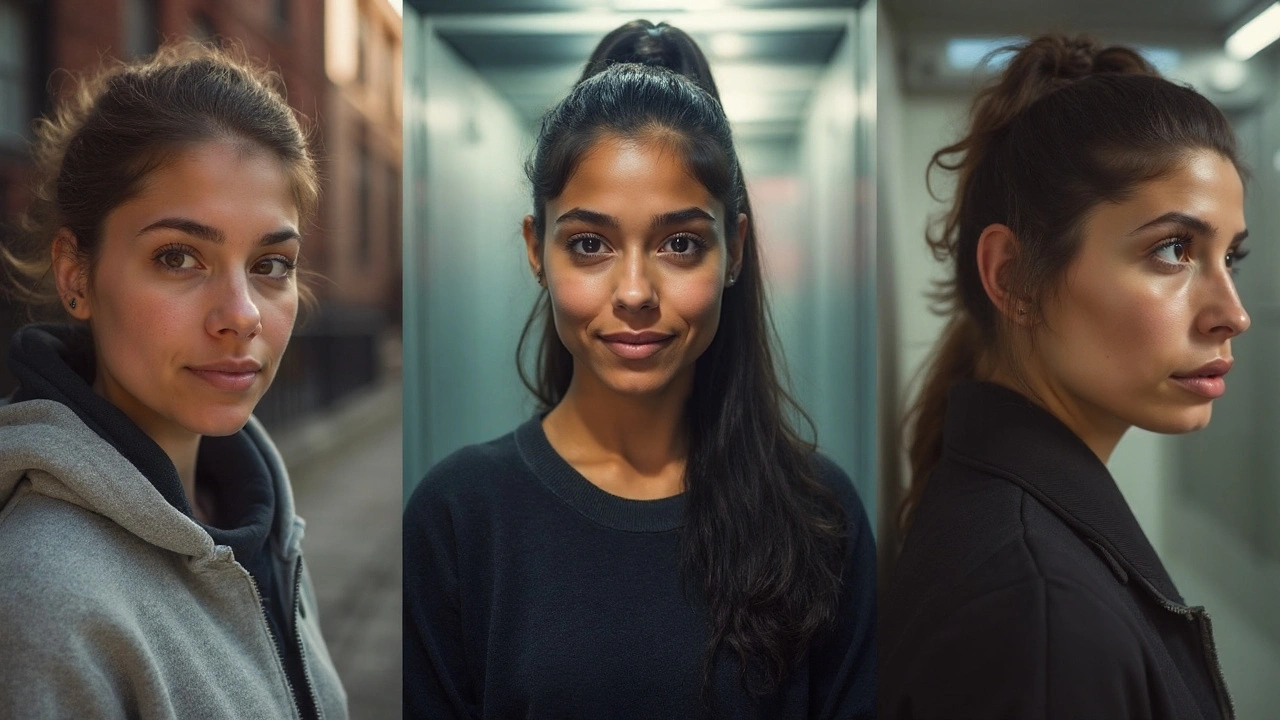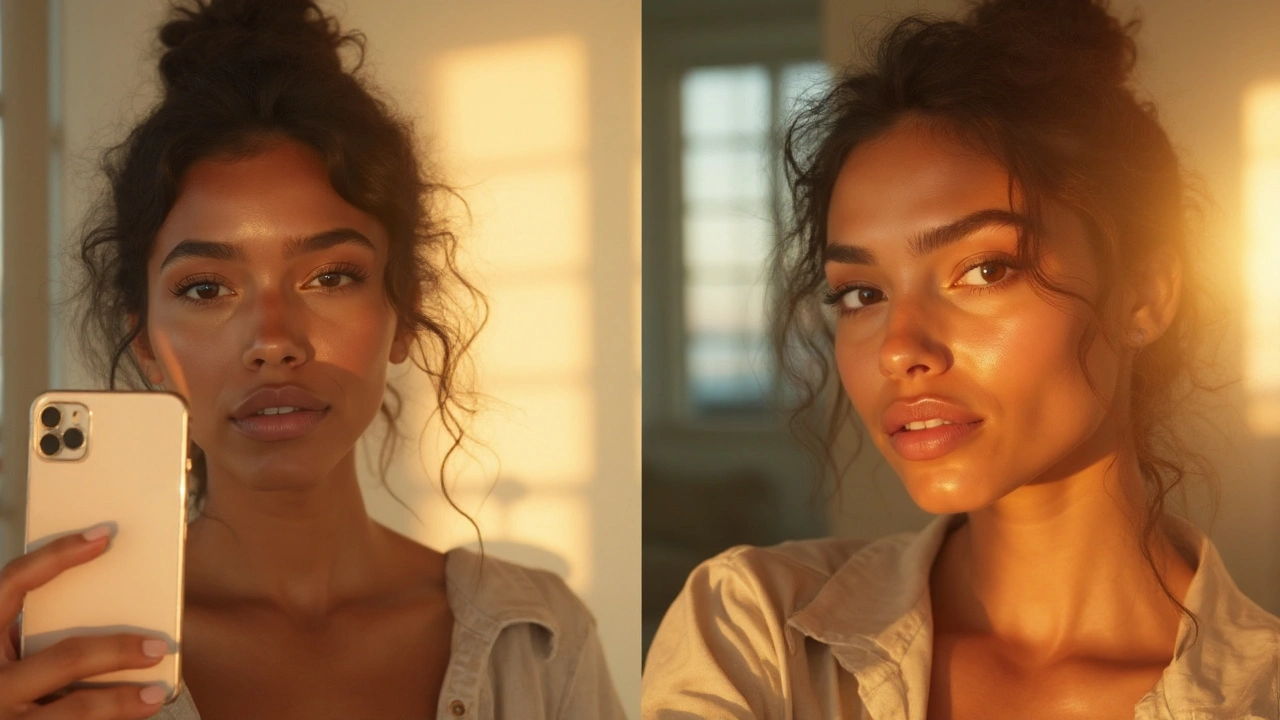You saw a new photo, a runway clip, or a red carpet close-up and did a double take. Kendall’s face looks different-sharper jaw, higher brows, fuller lips, or a smoother forehead than you remember. The real answer isn’t a single thing. In 2025, faces on our screens are a mix of makeup, lenses, lighting, short-term tweaks, long-term changes, and sometimes procedures. I’ll give you a straight read on the most likely reasons and how to sanity-check what you’re seeing-respectfully and without guessing her medical history. I write this from Dublin, where my two kids, Silas and Faye, have become very blunt critics of my own selfies. They’re not wrong: a phone at arm’s length can make anyone look like a different person.
TL;DR / Key takeaways
- Most day-to-day “face changes” come from styling: brow shape, lip lining, contour, hair part, lighting, and camera lens/angle.
- Ultra-wide phone lenses and close selfies distort features-research in JAMA Facial Plastic Surgery found they can make the nose look much larger at short distances.
- Weight shifts, hydration, sleep, and natural aging can subtly change cheeks, jawline, and eyes-no procedure needed.
- Cosmetic treatments exist (fillers, toxin, threads, surgery), but you can’t diagnose them from photos. Kendall has publicly pushed back on surgery rumors.
- Before you assume anything, compare multiple sources: paparazzi, runway, interviews, unedited backstage shots, and live video side-by-side.
Short version: there are many normal reasons why does Kendall look different-and most of them have nothing to do with a scalpel.
What actually changes how a face looks (no scalpel needed)
Start with the simple stuff. These factors change the face more than people expect, especially in 2025’s camera-first world.
1) Makeup moves bone (visually)
Brows pulled straighter and higher lift the whole eye frame. A crisp tail and a bleached brow read like a mini brow lift. Lip liner just outside the border gives fullness that photographs like filler. Nose contour narrows bridges. Bronzer under the cheekbone fakes buccal fat removal. The same face, a different map.
2) Hair is a frame
A center part and slick bun expose the temples, ears, and jaw angle, which makes the midface look leaner and the jaw sharper. Wispy face-framing pieces soften width. Bangs shorten the face, high ponytails pull the brows up. If Kendall’s hair is scraped back on a runway, expect a more carved look than a street-style photo with soft waves.
3) Lighting is surgery’s stunt double
Top-down, hard flash deepens under-eye shadows and flattens skin. Soft window light lifts texture and rounds edges. Ring lights erase pores and fine lines and add a catchlight that reads “edited” even when it’s not. Backstage LEDs versus outdoor shade will make anyone look like two different versions.
4) Lenses and angles change proportions
Phone cameras default to a wide field (≈24-26mm equivalent). Up close, that stretches the midface and makes the nose and chin pop. Step back and zoom to 2x or 3x (longer focal length) and the face flattens and looks slimmer. A 2018 JAMA Facial Plastic Surgery paper showed how short-distance selfies enlarge the nose compared to photos taken at portrait distances. Angle matters too: low angle = bigger jaw and nostrils; high angle = candy eyes, smaller jaw.
5) Weight, water, and sleep
Five days of salty food and poor sleep and you’ll see fuller cheeks and a softer jaw; a few weeks of training or travel stress and the midface leans out. Cheek fullness isn’t fixed; neither is the jaw. That’s true for celebrities, athletes, and dads on the school run.
6) Natural aging and hormones
Mid-20s to late-20s faces lose a touch of baby fat. The brow settles; the under-eye hollow can deepen; the chin can look stronger as fat pads shift. It reads as “refined,” which people often mistake for surgery. In live video, these subtle changes stand out more than in a flattened, filtered photo.
How to compare two images fairly (quick steps)
- Match the angle: front vs three-quarter. If angles differ, ignore jaw comparisons.
- Match the light: outdoor shade vs flash vs ring light. Note shadow direction.
- Match the lens: selfie vs pro telephoto (look for background compression).
- Check makeup: brow shape, liner style, lip line, contour placement.
- Use video as a tie-breaker. Faces in motion reveal what’s styling and what’s structure.

Could it be cosmetic work? How to tell without being creepy
I’ll be straight: you can’t confirm procedures from photos. Even surgeons say that. But you can understand why certain changes spark rumors, and how to think about it in a kinder way.
First, the public record
Kendall has addressed surgery rumors before and rejected them, noting instances where makeup choices (like heavier lip lining) sparked speculation. That history matters. Without a confirmed statement or medical record, everything else is guessing.
Common tweaks people confuse with surgery
- Smoother forehead/brow lift look: Could be toxin softening lines and subtly lifting the tail of the brow, or just a high ponytail, bleached brows, and clean lighting.
- Sharper jaw/slimmer face: Could be weight change, contour, slick-back hair, or masseter relaxers that soften jaw bulk. Wide lenses can exaggerate the chin, too.
- Fuller lips: Often lip liner and gloss placement. In motion, liner reveals itself at the corners. Filters also plump lips on the fly.
- Refined nose tip/bridge: Contour and lighting can narrow the bridge. True rhinoplasty signs are hard to spot if subtle, and pro makeup can fake most of it.
- Hollowed cheeks: Weight loss changes the buccal area. Harsh contouring can mimic buccal fat removal; soft, diffuse light puts that fullness back.
A practical, ethical decision tree
- Is the “change” consistent across angles, lighting, and video? If not, suspect styling and cameras first.
- Do paparazzi shots and live clips match the edited posts? If yes, it may be a stable change (aging, weight, or a long-term tweak). If no, filters are likely doing the heavy lifting.
- Is there a clear timeline? Real facial changes don’t swing back and forth week to week; makeup and lighting do.
- Do you have a credible, first-person confirmation? If not, keep your conclusion soft. Curiosity is fine; certainty isn’t.
Context from the industry (no numbers you’ll need to memorize)
The latest procedural reports from the American Society of Plastic Surgeons say injectables are by far the most common cosmetic treatments. That tracks with what you see on screen: quick, temporary tweaks-if they’re present at all-tend to be small and subtle. But keep the main rule: you can’t diagnose a celebrity from Instagram.
A note on threads and trends (2025)
Thread lifts and “fox eye” shaping had a moment, but many people now avoid them because results can be short-lived and polarizing. Brow placement trends shift every season-bleached brows, straight brows, laminated brows-each reads like “new face” on camera. Trends come and go faster than bone changes.
Spot the camera tricks and edits (simple tests)
Filters and edits are easier than ever in 2025, and a lot of what we call “work” is really software smoothing or lens effects. Here’s how to spot the common stuff without special tools.
Quick tests you can do in 30 seconds
- Background bends: Look at lines near the jaw and waist. If tiles, door frames, or bricks ripple, someone used a liquify-type tool.
- Skin blur mismatch: Zoom in. Are pores sharp on the forehead but airbrushed under the eyes? That’s a filter’s radius at work.
- Eye and lip scale: Filters often enlarge irises and lips and whiten teeth. Compare to paparazzi shots from the same week.
- Crisp hair + smudged skin: Over-selective smoothing keeps hair strands sharp while wiping texture from cheeks.
- Ring light tells: Perfect circular catchlights reflect in both eyes; skin looks “glassy.” That alone can erase fine lines and pores.
- Lens clue: Big background and stretched edges = wide lens. Compressed background and flatter face = telephoto. Different lenses, different faces.
Hands-on exercise (works on any celeb photo)
- Gather three images from the same week: candid street shot, professional red carpet, and a selfie or brand pic.
- Mark what’s constant (eye shape, nose width at the root) and what shifts (brow height, lip volume, jaw sharpness).
- Note the light (shadow direction), hairstyle, and lens cues (background compression).
- Check a live interview or backstage clip from that week as a tie-breaker.
| Factor | What it changes | Quick test | Best comparison |
|---|---|---|---|
| Makeup (brows, contour, liner) | Apparent brow lift, slimmer nose, fuller lips, carved cheeks | Look for contour edges, overlined lips, laminated brow texture | Runway vs bare-faced street shots |
| Hair styling | Jaw definition, face length, temple visibility | Slick bun vs soft waves on the same day | Backstage hair-change sequences |
| Lighting | Skin texture, under-eye depth, nose shape | Harsh flash vs window light; check shadow under nose | Daytime paparazzi vs night flash photography |
| Lens & angle | Nose size, jaw width, forehead-to-chin ratio | Wide background vs compressed background | Selfies vs pro portraits from same event |
| Weight/hydration/sleep | Cheek fullness, jawline sharpness | Compare over weeks; daily swings suggest lifestyle | Weekly candids vs campaign images |
| Aging | Subtle volume shifts, eye area definition | Year-on-year, not week-to-week | Annual runway seasons |
| Editing/filters | Porcelain skin, bigger eyes/lips, smoothed jaw | Background warps, texture mismatch, duplicate pores | Brand posts vs raw backstage video |

Checklists, examples, and your follow-up questions
Here’s your compact toolkit to use next time the group chat pings you a “new face” photo.
Before you assume cosmetic work
- Have you matched angle, light, and lens between photos?
- Is there video from the same week that looks different?
- Do paparazzi shots match the edited brand pics?
- Are brows, lip line, and contour doing the heavy lifting?
- Has the hairstyle changed the face shape?
If you still think “something’s changed”
- Is it stable across many settings for months? Think aging or weight, not a one-off trick.
- Is it tiny and localized (smoother forehead, lifted brow tail, subtler jaw bulk)? Could be makeup or short-term treatments-but still not provable from photos.
- Any first-person confirmation? If no, hold the line at “maybe.”
Real-life example
Last month, I tested my own camera. With a wide lens at arm’s length, my jaw looked chunky and my nose bossy. Step back two meters, zoom to 2x, and boom-leaner face, straight nose, same head. Silas told me to post only the second one. Faye said to keep both so people remember I’m human. Point is: the lens tells stories.
Mini-FAQ
- Did Kendall confirm any surgery? No. She has rejected surgery rumors in past interviews and pointed to makeup choices behind viral shifts.
- Why does she look different in runway vs candids? Runway lighting, heavy contour, tight hair, and longer lenses carve the face. Candids flatten it with softer styling and changing light.
- Why do some clips show fuller lips, others don’t? Liner and gloss placement, camera compression, and filters. In unedited interviews, look at the lip corners for real shape.
- Could buccal fat removal be the reason? Maybe in theory, but weight loss, contour, and lens choice mimic it easily. Without confirmation, it’s speculation.
- Why does she look smoother in brand shoots? Professional retouching, calibrated lighting, and sometimes subtle frequency separation (skin-smoothing) in post.
- Why does video look more “real” than photos? Motion exposes lighting changes, texture, and micro-expressions. It’s harder to hide edits frame to frame when lighting or angles shift.
Pitfalls to avoid
- Comparing a backstage iPhone flash snap to a campaign shot as if they’re equal.
- Reading changing brows as permanent surgery.
- Ignoring lens distortion in selfies (the classic nose/jaw trick).
- Confusing filter blur for naturally poreless skin.
Pro tips from set and street
- When in doubt, search for unedited runway close-ups and audience phone videos from the same event.
- Look for repeat patterns: the same jaw shape and eye frame across months is more likely a real baseline.
- Watch how the face looks mid-laugh or while drinking water in interviews-filters struggle there.
Next steps / Troubleshooting for different readers
- Casual fan: When a new image drops, grab a candid and a video from the same week. If they disagree, chalk it up to styling or edits.
- Parents of teens (I’m with you): Show your kids a side-by-side of a wide selfie vs a zoomed shot to teach how lenses lie. It beats a lecture. In my house, it stopped a spiral about “perfect skin.”
- Creators/bloggers: Label edits. Share a lighting setup shot in Stories. Your audience will trust your glam shots more when they understand the setup.
- Photography-curious: Try this: stand 2.5 meters away, set your phone to 2x, and shoot in soft window light at eye height. Compare that to your usual selfie. It’s night and day.
- If you’re comparing older vs newer Kendall pics: Match the vibe: runway to runway, candid to candid, studio to studio, then look for changes that persist across each lane.
Last thought: you clicked because you care about how people really look in a world of effects. That’s a healthy instinct. When Kendall looks “different,” the safe bet is styling, lenses, and light; sometimes life; maybe, sometimes, a small tweak we’ll never confirm. Hold the nuance. It makes scrolling a lot kinder-for her, and for you.

